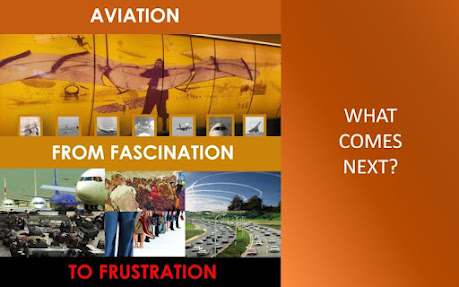"In a competitive market, if you do the work to lower your price by 10%, your market share grows.
If you dig in deep, analyse, reengineer and make thoughtful changes, you can lower your price another 10%. This leads to an even bigger jump in market share.
The third time (or maybe the fourth, or even before then), you only achieve a 10% savings by cutting safety, or quality, or reliability. You cut corners, certainly.
The last 10% costs your workers the chance to make a decent living, it costs your suppliers the opportunity to treat their people with dignity, and it costs you your reputation.
The last 10% isn't worth it. We're not going to remember how cheap you were. We're going to remember that you let us down."
This quote is taken from Seth Godin's blog post ‘The tragedy of the last 10%’, as it touches on the core issues of the competitive, value-destroying race for growth in the airline industry. Most airlines and airports have been operating within this zone for quite some time.
At surface level, it may look as though airlines dig deep, analyse, reengineer and make thoughtful changes, but they don't do it in the right way. During the process, they cut corners on quality, reliability, and potentially safety - things that cannot be quantified.
Too much time and money is wasted because airline leaders and strategists are still the legacy thinkers. They approach nonlinear reality with a linear mindset - so much so that they wilfully ignore the turning point from which flying more makes things worse for airlines and passengers, unaware of its wider consequences.
Airlines are trapped in a system that has no future and need to find the way out themselves. In such a complex and dynamic industry, looking at disruptions as strategic misalignment between plans and reality is a natural way forward, even if it may be uncomfortable for some. If approached wisely, disruptions can reveal systemic pain points that should be taken as a call for change.
It may be hard to accept the truth about where your airline is now and where it is going to be in six months or in a year from now if you continue to do what you have always done. Considering the critical state of the industry, some things have to change sooner rather than later. Major European airlines operating from busiest hub airports are exposed to the highest risk of failure.
The Dutch government was the first to take precautionary steps. They made a bold move by capping the number of flights from Amsterdam's Schiphol Airport for 12% compared to pre-pandemic level.
It remains to be seen if other critically congested airports, in particular Heathrow and Gatwick will follow suit intentionally, or will be forced to do so to stay in the game where care for employees, passengers, and for the nearby environment will take a more significant role.
On the airline side, these ideas may look strange from the perspective of the protectors of the status quo, those still assured that passengers will be tempted to fly if offered the rock bottom prices in exchange for undignified and costly travel experience. And consequently, that they can indefinitely pack more flights at congested airports, unconcerned about the high levels of air and noise pollution they spread around the densely populated areas day after day.
A modern strategy that works will require leaders to learn new skills and apply new tools. Among them, how to fine-tune strategy by learning from disruptions which is at the core of my work .
Switching the mindset from being too-big-to-fail to becoming creators of too-good-to-fail is what the air travel industry needs.
